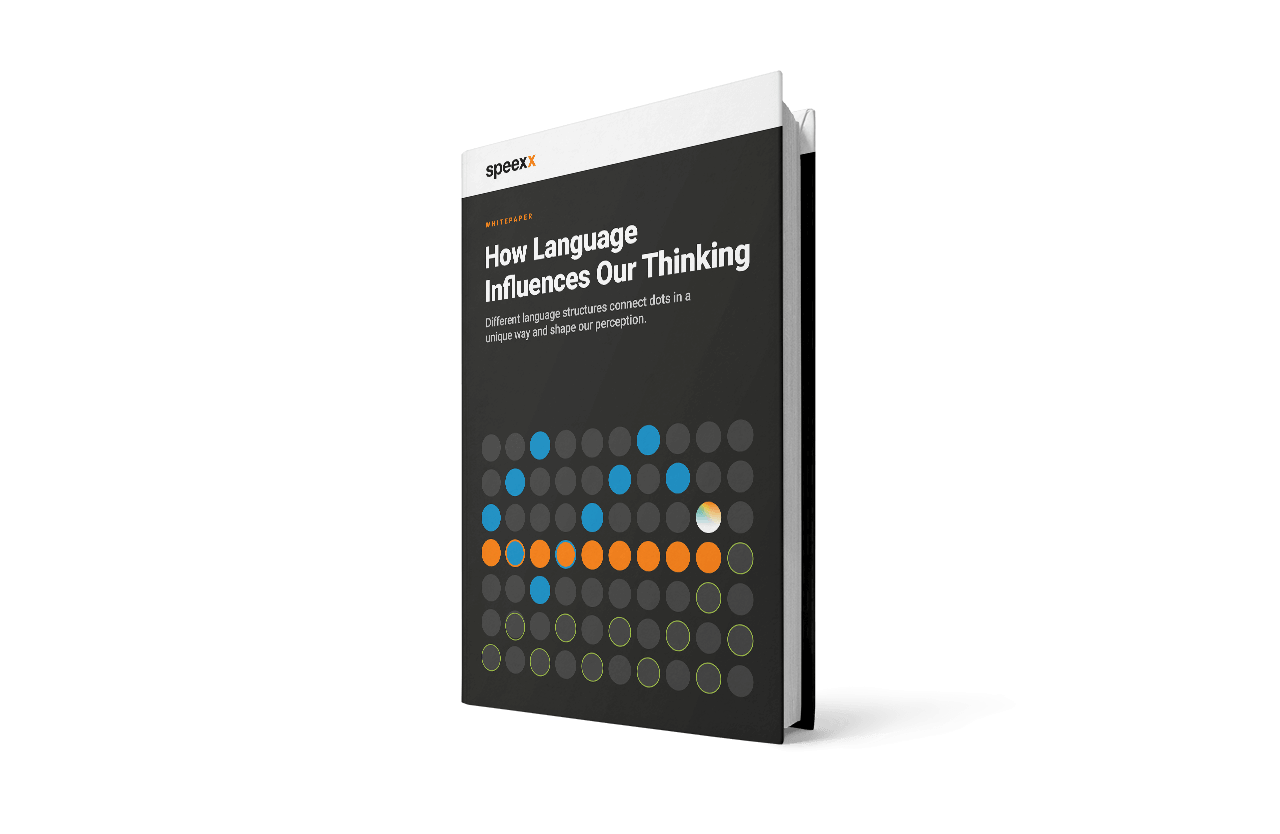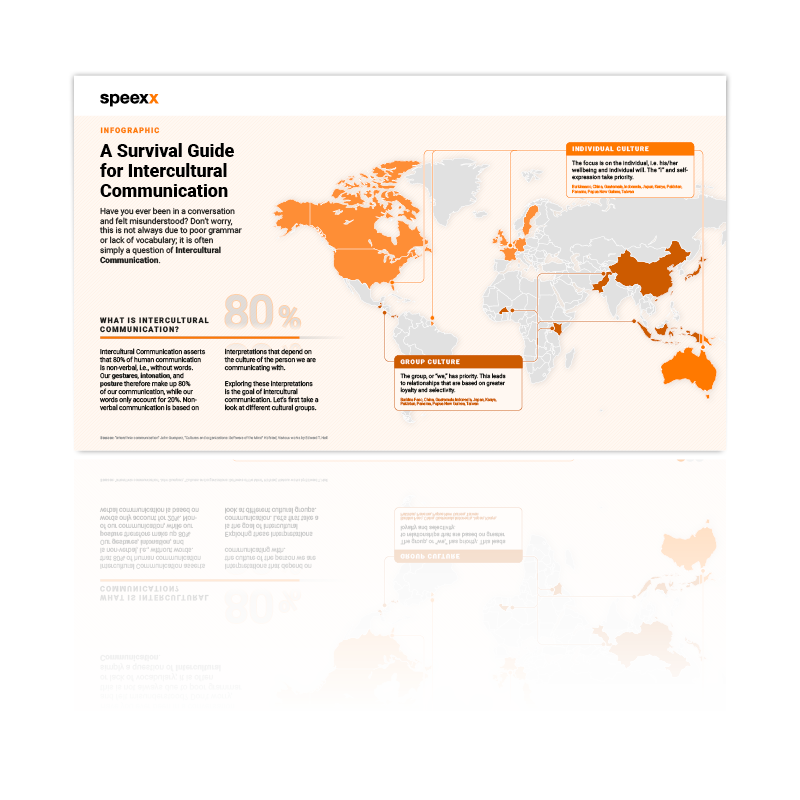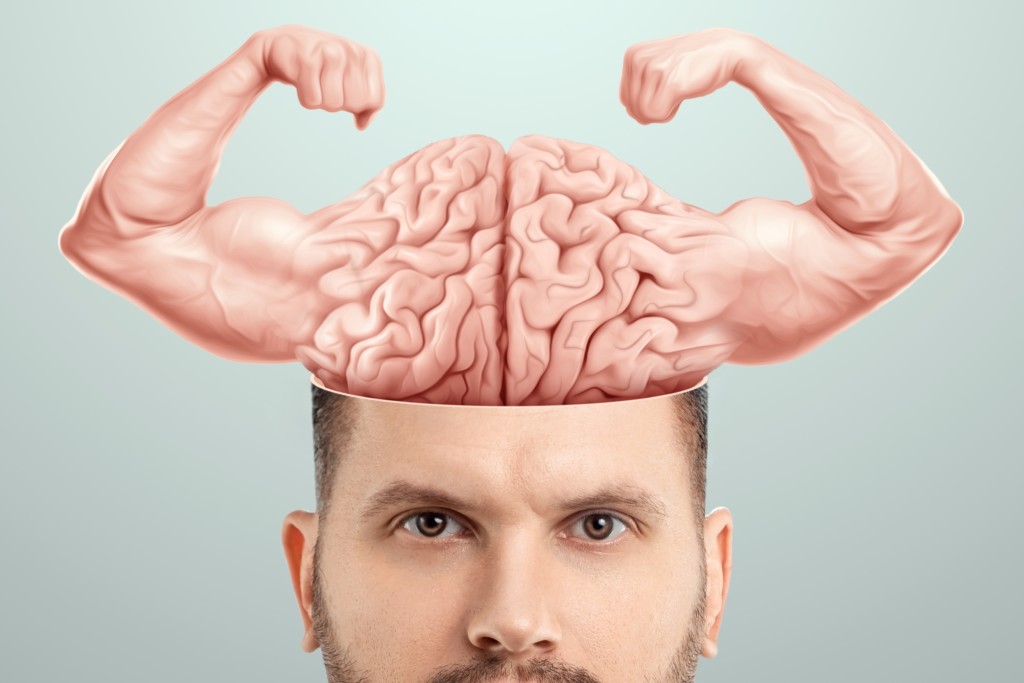In today’s hyperconnected world, being bilingual is far more than a professional asset—it’s a transformational tool for how we think, act, and relate to others. Whether you’re mastering Mandarin, elevating your English, or getting to grips with German, the benefits of bilingualism go beyond vocabulary lists and grammar rules. They shape how you see and interact with the world.
One of the key benefits of bilingualism—from cognitive flexibility to cultural empathy and even personality shifts—is that it opens a door to deeper human understanding. At Speexx, where our digital platform supports people development across global organizations, we see firsthand how language learning sparks real behavioral change—not just better communication.
Here’s how learning a new language truly transforms your brain, your worldview, and your connection with people from other cultures.
 Cognitive Benefits of Bilingualism: A Gym for the Brain
Cognitive Benefits of Bilingualism: A Gym for the Brain
Studies consistently show that bilinguals outperform monolinguals in cognitive control tasks. Switching between two languages strengthens the brain’s executive function—the system responsible for attention, problem-solving, and multitasking.
According to research published in the Journal of Experimental Child Psychology, bilingual individuals tend to score better in tasks requiring mental flexibility and working memory. These cognitive benefits persist across the lifespan and may even delay the onset of neurodegenerative diseases. A study in India found that symptoms of Alzheimer’s disease appear up to five years later in bilinguals compared to monolinguals.
And the effects aren’t only long-term. The benefits of bilingualism include staying mentally agile in everyday life—from switching between spreadsheets and Zoom calls to navigating new cultural contexts with ease.
Language and Perception: A New Lens on Reality
One of the more fascinating benefits of bilingualism is how it literally changes the way we see the world. One of the more fascinating benefits of bilingualism is how it literally changes the way we see the world. Different languages emphasize different aspects of experience. For example, while English may focus on the agent of an action (“John broke the vase”), Spanish or Japanese might omit the agent entirely, instead emphasizing the event (“The vase broke”).
This shift isn’t just grammatical—it affects perception. In one study, English speakers were more likely to assign blame, while Spanish and Japanese speakers paid more attention to the outcome than the perpetrator. Language shapes not only what we say but how we think.

Explore the fascinating ways language shapes us and our view of the world.
Personality Shifts: Feeling Like a Different Person
Research published in Psyche and The Journal of Personality and Social Psychology
shows that many bilinguals feel like a different person when they switch languages. One Spanish-English speaker said they were more assertive and extroverted in English, but warmer and more agreeable in Spanish.
This effect—known as cultural frame switching—means each language activates different behaviours, emotions, and values. It’s not just what you say that shifts, but how you act and relate.
In a study of over 1,000 multilinguals, 65% said they felt like a different person depending on the language they used.
For learners working on leadership, coaching, or communication skills with Speexx, this kind of self-awareness becomes a real asset. It deepens emotional intelligence and supports confident, culturally sensitive interaction.
Emotional Distance and Social Boldness
Interestingly, learning a new language can offer emotional detachment that lowers inhibitions. You might feel more comfortable giving a presentation, cracking a joke, or even saying “I love you” in a second language. As one multilingual author reflected, switching to a non-native language allowed them to explore bolder versions of themselves, leading to new experiences they wouldn’t have dared attempt in their native tongue.
This detachment can be freeing. It allows us to break patterns, step into different social roles, and embrace vulnerability without the weight of cultural expectations.
Cultural Benefits of Bilingualism: Beyond the Textbook
A language isn’t just a code—it’s a culture. Grammar and vocabulary are only half the picture; the real learning happens when you begin to understand how people think, relate, and express themselves within that language.
Globibo’s blog points out that linguistic fluency often leads to cultural fluency. When you understand how indirectness functions in Japanese or how humor works in British English, you become more empathetic and attuned to cultural nuance. This isn’t just good manners—it’s a core skill for global leadership and inclusive workplaces.
Learning a language also challenges ethnocentrism. It shows you that your way of thinking isn’t the only way. For example, in many indigenous languages, time is perceived as circular, not linear—an idea that can fundamentally shift your relationship with planning, memory, and mindfulness.

Explores intercultural communication and how cultural norms influence global interactions.
The GEAR Model: Why Language and Culture Are Inseparable
A particularly insightful framework for understanding how bilingualism shapes intercultural competence comes from researchers Xinjie Chen and Amado Padilla. Their GEAR model (Growth, Exploration, Awareness, Reinforcement), published in Frontiers in Psychology, explains how bilingualism and biculturalism work together to enhance personal development and cultural interaction.
Growth: Bilingual individuals often show increased emotional resilience and adaptability—essential traits for cross-cultural environments.
Exploration: Language learning encourages curiosity about how others live, work, and communicate.
Awareness: The process of switching between linguistic systems builds sensitivity to social cues and unspoken norms in other cultures.
Reinforcement: Regular use of multiple languages strengthens social bonds and confidence when navigating diverse spaces.
As the authors note, “language is a vehicle of culture.” Because bilinguals regularly engage with different cultural and linguistic frameworks, they become more culturally fluent—and more socially agile—than their monolingual peers.
This deeply mirrors what we see at Speexx: learning a new language is never just about language. It’s about preparing people to thrive in multicultural, fast-changing workplaces where emotional intelligence and global mindset matter more than ever.

Professional Edge: More Than Just Job Ads
The demand for bilingual professionals is growing fast. Between 2010 and 2015, the number of job postings seeking bilingual candidates more than doubled in the US, with particularly strong growth in healthcare, finance, and customer service.
But this isn’t just about employability. Being bilingual often correlates with higher earnings and faster promotion tracks. Why? Because language skills come bundled with soft skills—adaptability, empathy, and intercultural communication—that are vital in diverse teams.
In fact, one study published in MIT’s Review of Economics and Statistics found that high-level bilingualism is associated with additional earnings of roughly $3,000 per year, even after controlling for other variables.
For organizations that use Speexx to support talent development, language learning is rarely an isolated goal. It’s embedded in leadership programs, onboarding for international teams, and diversity and inclusion initiatives. In other words, it’s a strategic asset.
Empathy, Family, and Identity
Language learning is also profoundly personal. It allows people to connect with family, rediscover heritage, or preserve cultural identity across generations.
In her Medium post, Arifa Zaini Syafhira describes how learning a new language affected not just her thinking but her self-conception. The act of switching between languages helped her navigate new emotional spaces and strengthened her sense of identity.
Whether it’s speaking a grandparent’s dialect or making small talk with your in-laws, bilingualism builds emotional bridges that no translator app can replicate.
Beyond the Classroom: Immersion and Pragmatic Competence
True bilingualism requires more than grammar drills. As Stanford’s research on language and culture makes clear, language learning is most powerful when it happens in real contexts—with all the messy, rich, unpredictable interactions that come with it.
This is where “pragmatic competence” develops—not just knowing what to say, but how, when, and why to say it. For organizations and learners using Speexx, the combination of real-world scenarios, live coaching, and personalized feedback creates an immersive experience that builds this kind of nuanced fluency.
Final Thoughts: Language as a Mirror and a Bridge
Learning a language is like learning to see the world through someone else’s eyes—and in the process, discovering more about your own. It’s a journey of self-discovery, cultural awakening, and mental flexibility.
Whether you’re leading a global team, settling into a new country, or just trying to order dinner without pointing at the menu, being bilingual changes how you think, feel, and interact.
At Speexx, we believe that this transformation isn’t just about better communication—it’s about building better people.

 Cognitive Benefits of Bilingualism: A Gym for the Brain
Cognitive Benefits of Bilingualism: A Gym for the Brain